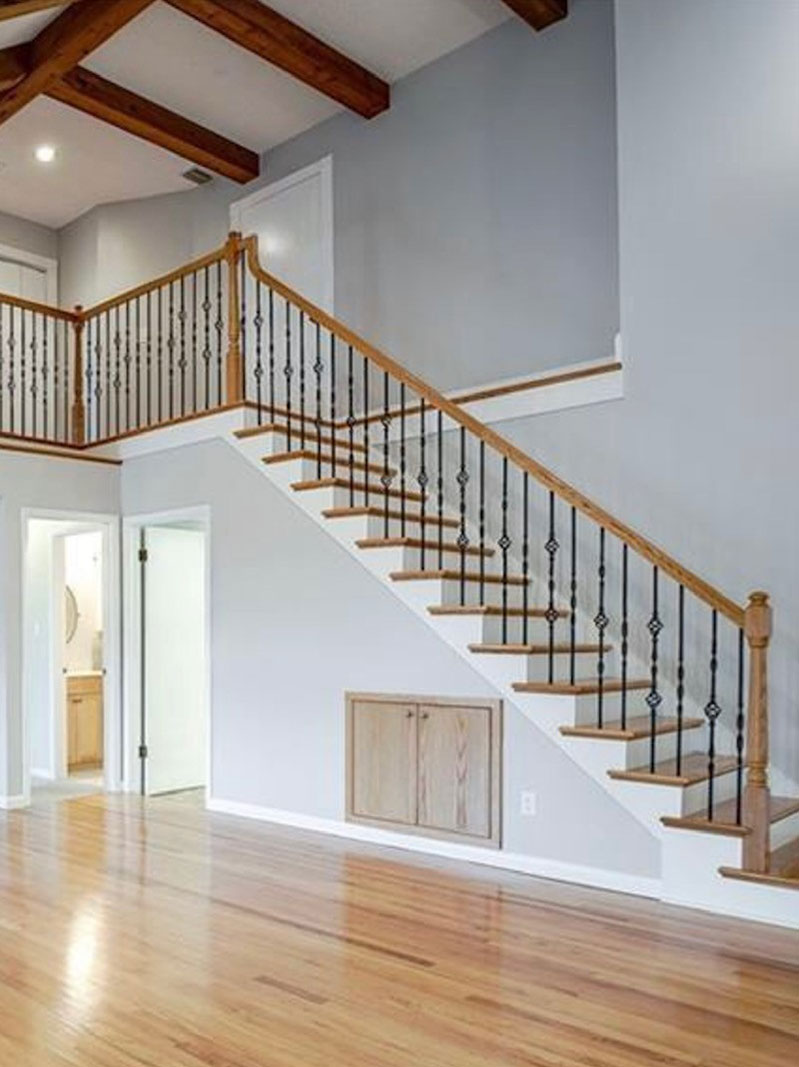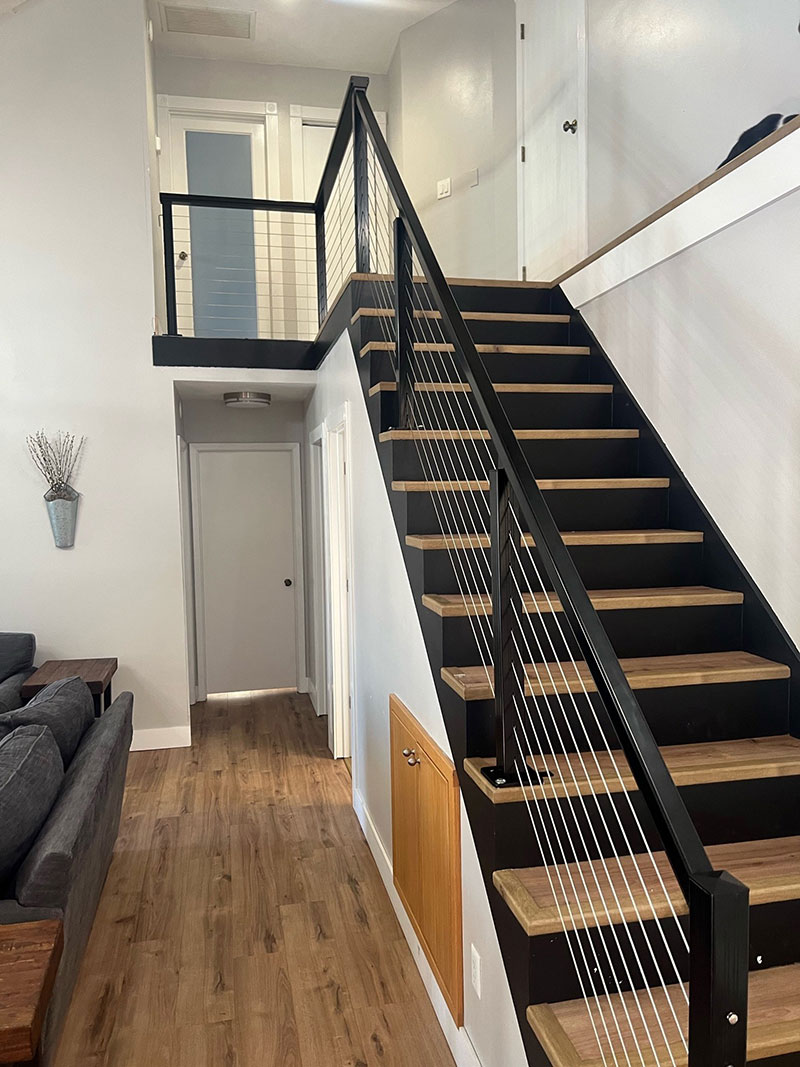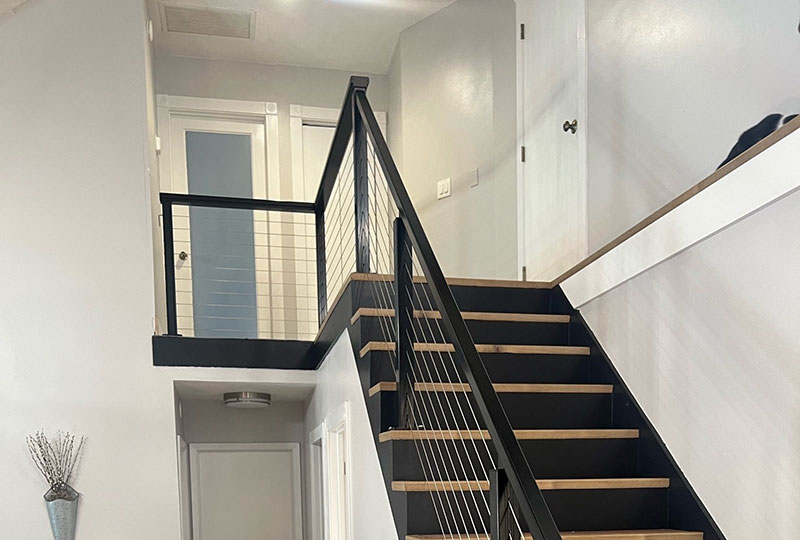RailFX Case Study
Using Cable Railing to Modernize a Home’s Interior
In the spring of 2021, Eric Johnson and his family moved to Florida, prepared to make significant upgrades to their new home. From gutting a bathroom and adding a bedroom, to replacing flooring and the stairway railing, the Johnson family had the vision to modernize the home’s look and feel.
Because the flooring was being replaced — including the stair treads — the oak wood and ornamental picket railing were removed. Instead of reinstalling the outdated railing, Wendy, Eric’s wife, suggested they consider cable railing after seeing it in an advertisement. “I am thrilled with how the railing turned out,” Wendy said. “It has helped to open up the great room and capture the modern look we were going for.”
“I thought she was looking at the cable railing for our dock leading to the lake,” said Eric. “She said we should use it for our stairway railing. After seeing the product and how it changes the look and feel of a space, I knew it was the right choice,” said Eric.
After sending pictures and measurements to RailFX’s easy “get a quote” system, he had a quote within 24 hours, and the product shipped within two weeks. “The only thing I forgot to order was the post skirts, and when I did order them, they were in my hands within a day or two,” Eric added.
Eric purchased the RailFX custom aluminum cable railing system with the flat top rail long before he was named VP of sales for Nationwide Industries and LockeyUSA, two PrimeSource Building Products’ brands, along with RailFX and Ultra-tec. “Since I purchased the product before I transitioned to my current role in the company, it was a nice test to see how RailFX services their customers,” said Eric. “The service I received was very impressive.”
Not only was Eric impressed with the customer service, but he also noted that the packaging and shipping were top-notch.
A product like this could be easily damaged during shipping, but everything was clean, and it was a complete kit; I didn't have to buy any extra or special tools," he added. "That's a nice feature not many rail companies offer.~ Eric Johnson
The Johnson family couldn’t be happier with their new stairway railings. “We’ve had several neighbors who now want to install cable railing not only on their docks but also for their interior projects,” said Eric.
The transformed stairway — which leads into the living room— ties together the other rooms of the house. It significantly modernized a home’s interior, something the Johnsons say makes their new house feel like home.
To learn how you can transform your room , contact sales@railfx.net.
Before

After




